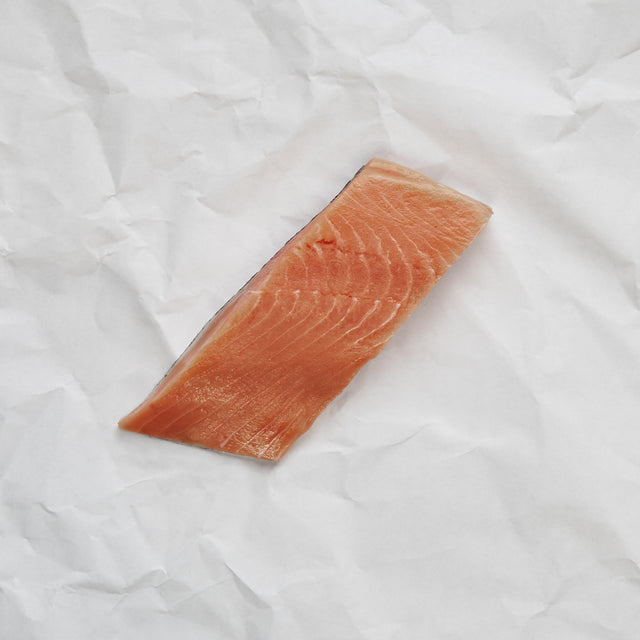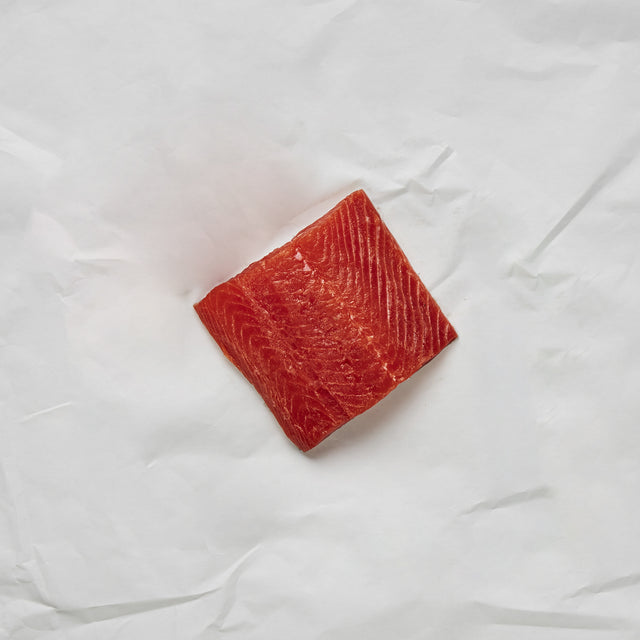Deciding between Wild Caught vs. Farm Raised Salmon is a common question for seafood lovers. Salmon is renowned as a healthy entrée — and for good reason. Salmon is packed with heart-healthy omega-3 fatty acids, on top of being a great source of protein and selenium. Plus, salmon is not only delicious to eat, but also easy and versatile to prepare.
Yet, despite all of these benefits, all salmon is not created equal. The nutritional profile between farm-raised and wild-caught salmon is staggeringly different. Knowing what goes into the things you eat is an important part of not only enjoying great food but also supporting those who make a positive impact on the environment. Learn the difference between seafood that is wild-caught and seafood that is farmed.

Wild Caught Salmon
Wild-caught salmon applies to salmon that have lived in the open ocean, allowing them to forage for a natural diet while navigating the dynamic currents, thus building a stronger, more athletic body. Their natural diet makes them exceptionally rich in Omega-3’s and natural minerals, while their migration organically controls the fish’s fat content.
Farm Raised Salmon
Farm Raised Salmon refers to salmon bred in controlled environments, including pens or tanks. Fish farmers closely monitor their diet and growth, often using manufactured feed to supplement their nutrition. Farm-raised salmon are also artificially dyed; the filets are naturally gray and lack the signature pink color. The pink comes from krill and shrimp that the fish naturally eat in the wild, which they don’t have access to when they’re raised in captivity.

Why Choose Wild-Caught Salmon Over Farm-Raised Salmon?
Taste
If you’ve spent your life eating farm-raised salmon over the real thing, then the difference in taste is something you’ll have to taste to believe. Wild-caught salmon’s varied diet and active lifestyle give the filet a distinct, robust flavor that is incomparable to farm-raised salmon.
Nutritional Benefits
If you’ve ever seen a wild-caught fillet next to a farm-raised fillet, you likely noticed something was off. Wild salmon tends to have a brighter, richer pink-red color, while farm-raised salmon is a dull pink. This is due to the amount of the molecule astaxanthin, which wild salmon get naturally from their diet, but farmed salmon receive synthetically. Astaxanthin is an antioxidant and anti-inflammatory. It can also improve blood flow and enhance your mitochondrial energy production. Just look for the deeper color so you’ll know you’re getting the real deal.
Although farm-raised salmon does bring a nice dose of vitamin C to the table, its wild-caught counterpart touts almost twice the amount of zinc, potassium, iron, and crucial proteins like potassium and magnesium. They also provide a rich array of vitamins, including A, D, B-6, and B-12. You can read more about the benefits of eating wild-caught salmon here.
Farm-Raised Salmon May Contain Contaminants
Research indicates that farm-raised fish contain harmful contaminants, such as pesticides and polychlorinated biphenyls (PCBs), which have been linked to cancer. These contaminants are ingested by the fish through the food they eat and the environment in which they live. While the exact levels and dangers of these contaminants aren’t always known, this is definitely a case of better safe than sorry.
Support Sustainable Fishing Practices
By opting for wild-caught, you are supporting fishing practices that respect marine ecosystems, helping to support the balance of species and their habitats. Captain Tony Wood is one of many captains who we source our salmon from. He upholds strict standards to keep his operation environmentally-friendly and of top quality. You can read more about the fantastic work he does here!

Wild-Caught Salmon from Alaskan King Crab Co.
At Alaskan King Crab Co., we're more than just a purveyor of high-quality seafood. We aim to educate and empower our customers, providing not only outstanding products but also the knowledge to savor and appreciate them fully.
As a testament to our commitment to quality and education, we proudly offer a range of wild-caught seafood, including our Sockeye Salmon and Coho Salmon. Sourced straight from the open waters, our wild-caught salmon delivers the unmatched taste of nature while fostering sustainability.
Experience the difference for yourself—our wild-caught salmon visibly stands out from its farm-raised counterparts, presenting a rich color and firm texture that results in an elevated dining experience.



